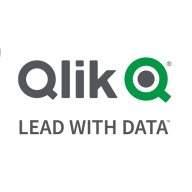

Qlik Replicate and Azure Data Factory compete in the data integration and ETL market. Based on the comparison, Azure Data Factory holds a slight advantage due to its comprehensive transformation features and seamless integration with Azure services.
Features: Qlik Replicate offers real-time change data capture, broad connector support, and efficient data manipulation. Azure Data Factory provides extensive transformation features, a complete set of connectors, and a user-friendly interface.
Room for Improvement: Qlik Replicate could improve user-friendliness, API compatibility, and licensing simplicity. Azure Data Factory could enhance documentation, tool integration, and address its pricing complexity.
Ease of Deployment and Customer Service: Qlik Replicate supports hybrid, public cloud, and robust on-premises deployment but requires improvement in customer service responsiveness. Azure Data Factory supports hybrid and public cloud deployment, benefiting from Microsoft's robust support infrastructure but could improve documentation clarity.
Pricing and ROI: Qlik Replicate is priced per endpoint, advantageous for large-scale operations but challenging for small businesses. Azure Data Factory's pay-as-you-go model offers flexibility but lacks cost transparency. Both deliver significant ROI by reducing manual workload and operational costs.
Our stakeholders and clients have expressed satisfaction with Azure Data Factory's efficiency and cost-effectiveness.
I conducted a cost comparison with the AWS service provider, and this option is much cheaper than the Kinesis service offered by AWS.
Customers have seen ROI with Qlik Replicate because they get their data for analysis faster, enabling quicker decision-making compared to traditional data sourcing methods.
The technical support is responsive and helpful
The technical support from Microsoft is rated an eight out of ten.
The technical support for Azure Data Factory is generally acceptable.
Even priority tickets, which should be resolved in minutes, can take days.
Support response times could be improved as there are sometimes delays in receiving replies to support cases.
Azure Data Factory is highly scalable.
The system could be scaled to include more sources and functions.
The solution has a high level of stability, roughly a nine out of ten.
Incorporating more dedicated API sources to specific services like HubSpot CRM or Salesforce would be beneficial.
I suggest integrating some AI functionality to analyze data during the transition itself, providing insights such as null records, common records, and duplicates without running a separate pipeline or job.
The inability to connect local VMs and local servers into the data flow is a limitation that prevents giving Azure Data Factory a perfect score.
It is a core-based licensing, which, especially in the banking industry, results in the system capacity being utilized up to a maximum of 60%.
Qlik Replicate could be improved in the next release by incorporating more monitoring options to monitor the logs.
The pricing is cost-effective.
It is considered cost-effective.
For Qlik Replicate, the setup cost includes the requirement of a server, which represents the hardware cost that must be covered.
Licensing is calculated based on the machine's total capacity rather than actual usage.
The orchestration features in Azure Data Factory are definitely useful, as it is not only for Azure Data Factory; we can also include DataBricks and other services for integrating the data solution, making it a very beneficial feature.
The platform excels in handling major datasets, particularly when working with Power BI for reporting purposes.
It connects to different sources out-of-the-box, making integration much easier.
The most valuable feature of Qlik Replicate is their change data capture feature.
Data retrieved from the system can be pushed to multiple places, supporting various divisions such as marketing, loans, and others.
| Product | Market Share (%) |
|---|---|
| Azure Data Factory | 5.2% |
| Qlik Replicate | 2.3% |
| Other | 92.5% |


| Company Size | Count |
|---|---|
| Small Business | 31 |
| Midsize Enterprise | 19 |
| Large Enterprise | 55 |
| Company Size | Count |
|---|---|
| Small Business | 9 |
| Large Enterprise | 10 |
Azure Data Factory efficiently manages and integrates data from various sources, enabling seamless movement and transformation across platforms. Its valuable features include seamless integration with Azure services, handling large data volumes, flexible transformation, user-friendly interface, extensive connectors, and scalability. Users have experienced improved team performance, workflow simplification, enhanced collaboration, streamlined processes, and boosted productivity.
Qlik Replicate is a data replication solution for replicating data from one source database to another for business intelligence software. It offers data manipulation and transformations, replication without impacting source databases, and ease of use without needing ETL. The solution is stable and user-friendly, with detailed logging and support.
Qlik Replicate has improved the organization by allowing each team to replicate their data into a single-source data location. The most important feature of Qlik Replicate is its ability to replicate and update records without needing a programmer.
We monitor all Data Integration reviews to prevent fraudulent reviews and keep review quality high. We do not post reviews by company employees or direct competitors. We validate each review for authenticity via cross-reference with LinkedIn, and personal follow-up with the reviewer when necessary.